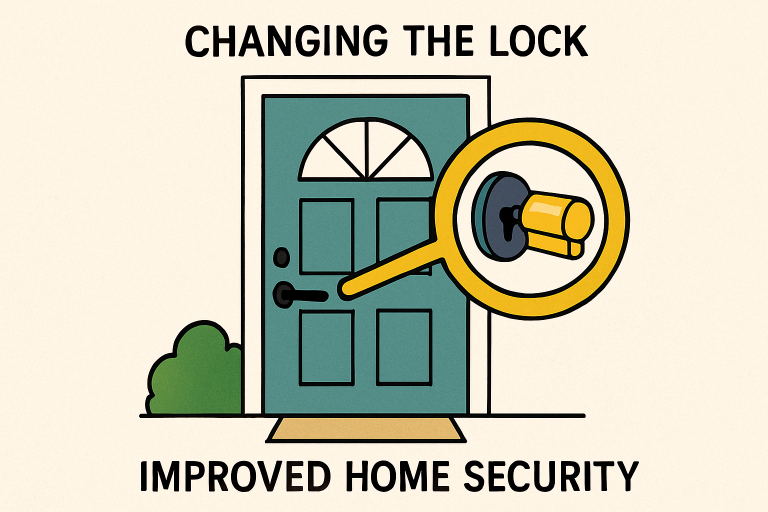Table of Contents
Key Takeaways
- Changing locks regularly reduces vulnerabilities in both residential and commercial properties.
- Understanding the various types of locks and common security threats can help you make informed decisions.
- Professional locksmiths offer services that go beyond simple replacements, including advanced security consultations.
- Recent crime statistics highlight the importance of proactive security measures, such as lock changes.
- DIY approaches are possible, but they may not offer the same level of reliability and safety as those provided by trained professionals.
- Routine lock maintenance can prevent costly repairs and emergencies in the long run.
Why Routine Lock Changes Matter
Security threats evolve quickly, making lock changes essential for safeguarding families, property, and assets. Regular upgrades reduce risks and strengthen security. Proactive lock changes, not just during major events, help build resilience against unauthorized access. Whether homeowner, manager, or landlord, routine lock updates promote peace of mind and deter intruders.
For those in Central Florida, professional services such as lock repair Orlando ensure both expert installation and advice tailored to your unique needs. Regular upgrades also keep you aligned with evolving security technologies, offering smarter and stronger protection. This simple step shows a commitment to safeguarding your property and the people who rely on it. Ultimately, staying ahead of potential risks is always easier than dealing with their consequences.
Common Threats That Make Lock Changes Necessary
Many scenarios can compromise your lock security, such as lost keys, recent tenants, or renovations, which all pose risks. Even if you think every key is accounted for, unauthorized duplicates can still exist. Older locks are often targeted with advanced tools like bumping or picking. Longevity doesn’t guarantee safety and can increase vulnerability. As burglars improve their methods, so should your defenses. Routine lock changes help prevent vulnerabilities, and installing modern locks ensures you’re protected from current threats.

Types of Locks and Their Security Levels
Not all locks offer the same protection. Understanding options and their pros and cons is crucial. Deadbolts are ideal for exterior doors because of their strength. Smart locks offer remote control but need regular updates to stay secure. Key-in-knob locks may work indoors but are less safe outside. Padlocks are useful for storage or outbuildings. Third-party testing, like that from Consumer Reports, stresses testing lock durability and reliability. Choose high-quality, bump- and pick-resistant locks for entry points to ensure security.
Professional vs. DIY Lock Changes
Online tutorials might make DIY lock installation seem appealing, but it requires technical skill. Professionals ensure precise fit, advanced mechanisms, and offer warranties, unlike DIY. Simple locks may be DIY-friendly, but complex or smart systems should be handled by pros to avoid reducing security.
Step-By-Step: What Happens During a Lock Change
- Assessment of the current lock and door structure to determine compatibility and potential weaknesses
- Removal of existing hardware, ensuring no damage to the door or frame
- Accurate measurement and selection of the new lock, tailored to the requirements of your entry point
- Installation and secure fitting, performed with specialized tools for precise alignment
- Testing of all new keys, digital codes, or entry methods to verify flawless operation
- Responsible disposal or recycling of outdated lock components
Each phase is designed to seamlessly reinforce security and ensure the change does not disrupt your routines.
Maintenance Tips for Long-Lasting Security
- Apply a graphite-based lubricant to lock components every six months to prevent sticking.
- Regularly inspect and tighten all lock screws, plates, and fittings to avoid mechanical loosening.
- Check key integrity—cracked or bent keys should be replaced at once, as they can damage the lock.
- Use trusted locksmiths to make spare keys rather than duplicating worn ones, which can cause premature wear and tear.
These small actions prolong your lock’s lifespan and maintain optimum function, reducing the potential for mid-crisis repairs.
Recent Security Trends and Crime Data
FBI data links outdated security to more break-ins. Neighborhoods with newer locks experience fewer unauthorized entries. Security agencies advise regular lock updates as a valuable investment for lower insurance costs and peace of mind. Staying ahead by updating locks helps prevent intruders from exploiting security flaws.
When Should You Consider Upgrading Your Locks?
Upgrading your locks shouldn’t only follow a burglary or after a major move. If you’re adding smart technology, embarking on renovations, or suspecting unauthorized key copies, it’s time to act. Outdoor locks subjected to weather extremes may also need attention annually, not just after visible damage. If your system no longer feels current or you’re second-guessing its reliability, trust your instincts—it’s better to be safe and proactive.

